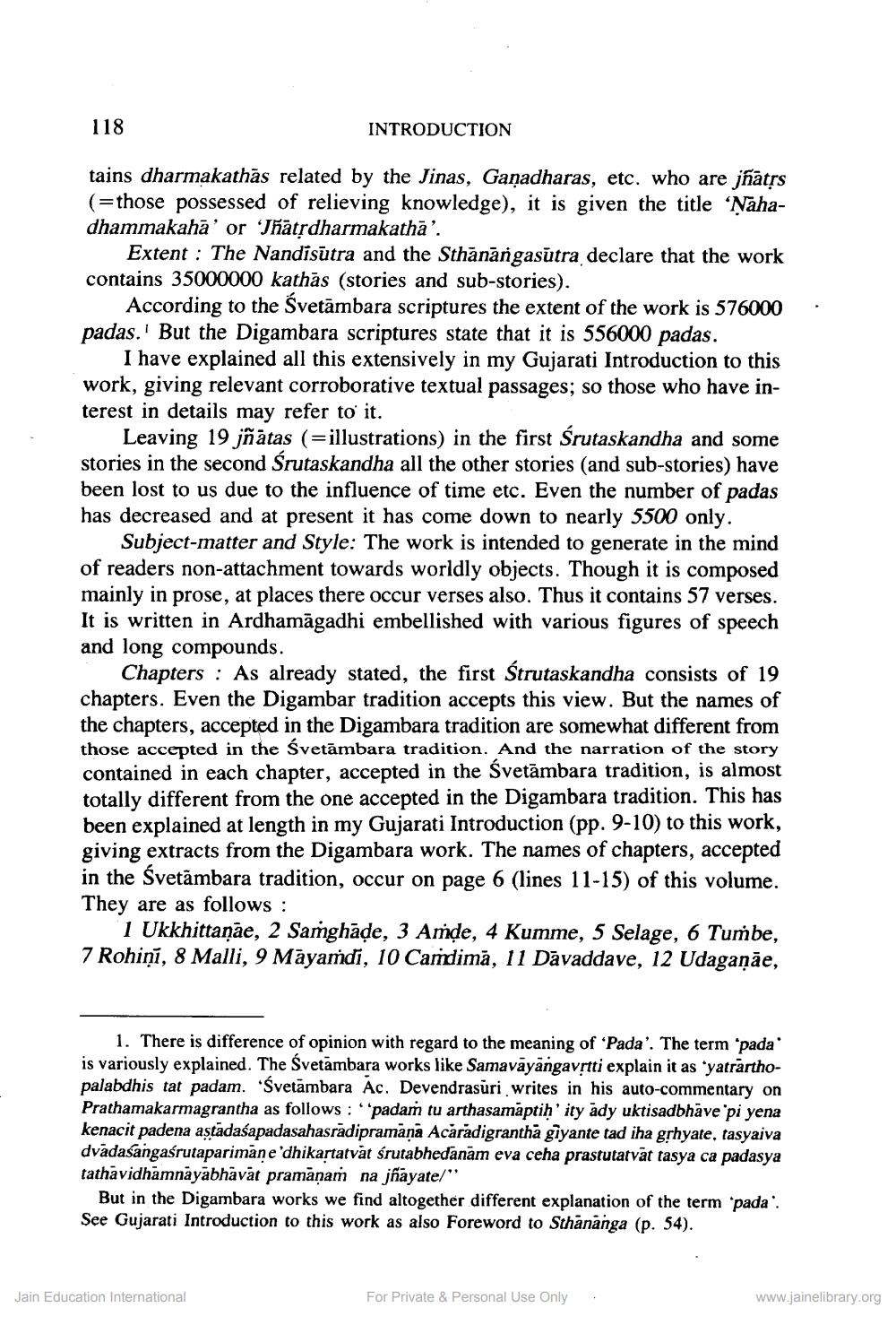________________
118
INTRODUCTION
tains dharmakathās related by the Jinas, Ganadharas, etc. who are jñātrs (=those possessed of relieving knowledge), it is given the title 'Nahadhammakahā' or 'Tñātņdharmakathā'.
Extent: The Nandisutra and the Sthānāngasūtra declare that the work contains 35000000 kathās (stories and sub-stories).
According to the Svetāmbara scriptures the extent of the work is 576000 padas.' But the Digambara scriptures state that it is 556000 padas.
I have explained all this extensively in my Gujarati Introduction to this work, giving relevant corroborative textual passages, so those who have interest in details may refer to it.
Leaving 19 jñātas (=illustrations) in the first Śrutaskandha and some stories in the second Śrutaskandha all the other stories (and sub-stories) have been lost to us due to the influence of time etc. Even the number of padas has decreased and at present it has come down to nearly 5500 only.
Subject-matter and Style: The work is intended to generate in the mind of readers non-attachment towards worldly objects. Though it is composed mainly in prose, at places there occur verses also. Thus it contains 57 verses. It is written in Ardhamāgadhi embellished with various figures of speech and long compounds.
Chapters: As already stated, the first Strutaskandha consists of 19 chapters. Even the Digambar tradition accepts this view. But the names of the chapters, accepted in the Digambara tradition are somewhat different from those accepted in the Śvetāmbara tradition. And the narration of the story contained in each chapter, accepted in the Svetāmbara tradition, is almost totally different from the one accepted in the Digambara tradition. This has been explained at length in my Gujarati Introduction (pp. 9-10) to this work, giving extracts from the Digambara work. The names of chapters, accepted in the Svetãmbara tradition, occur on page 6 (lines 11-15) of this volume. They are as follows :
1 Ukkhittanae, 2 Samghāde, 3 Amde, 4 Kumme, 5 Selage, 6 Tumbe, 7 Rohini, 8 Malli, 9 Māyamdi, 10 Camdimā, 11 Dāvaddave, 12 Udaganāe,
1. There is difference of opinion with regard to the meaning of 'Pada'. The term 'pada is variously explained. The Svetambara works like Samavāyangavrtti explain it as 'yatrarthopalabdhis tat padam. "Svetāmbara Ac. Devendrasuri writes in his auto-commentary on Prathamakarmagrantha as follows: "padam tu arthasamaptih'ity ady uktisadbhäve 'pi yena kenacit padena astādaśapadasahasradipramana Acaradigrantha giyante tad iha grhyate, tasyaiva dvādasangaśrutaparimane 'dhikartatvat śrutabhedanām eva ceha prastutatvāt tasya ca padasya tathāvidhamnāyābhāvāt pramānam na jñāyate/"
But in the Digambara works we find altogether different explanation of the term "pada. See Gujarati Introduction to this work as also Foreword to Sthānanga (p. 54).
Jain Education International
For Private & Personal Use Only
www.jainelibrary.org




